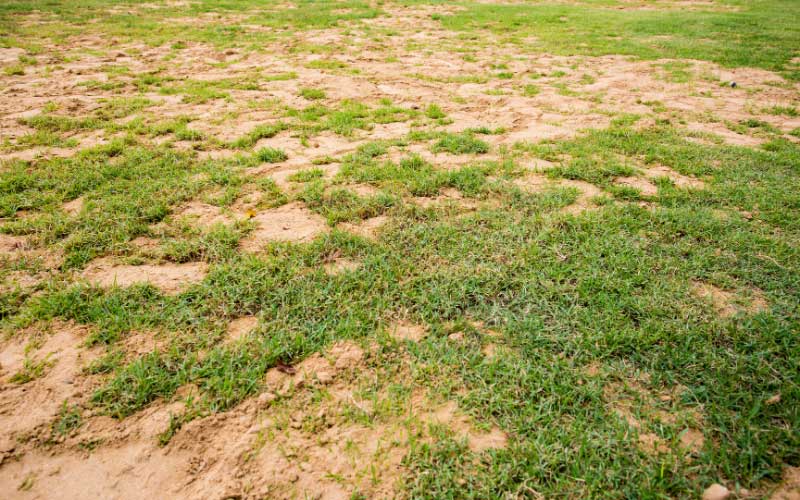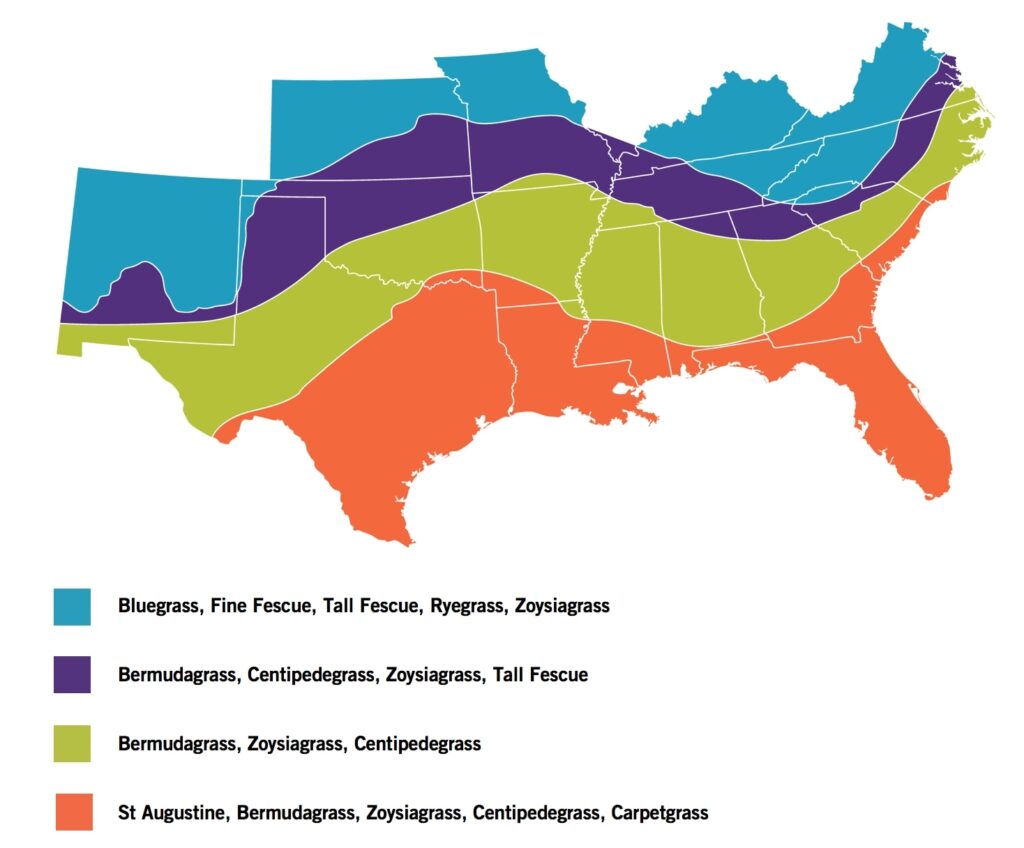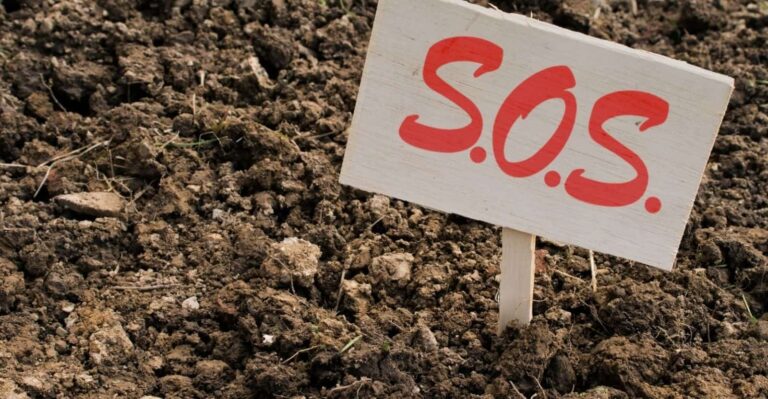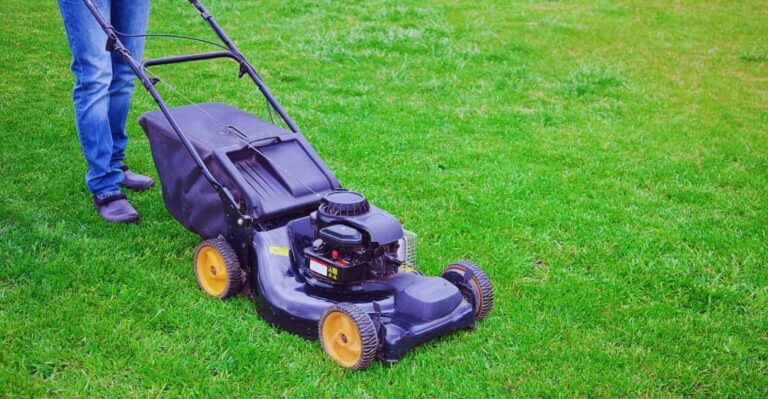Amazon has put together some great Home Gift Deals – save money and get your shopping done at the comfort of your home! Click here to see deals on Amazon
When it comes to lawns, sandy soil is the most difficult to work with. Unlike clay, which is usually sticky when wet, sandy soil is dry and powdery.
Even after a good rain, sandy soil quickly turns hard and gets compacted. It makes it difficult to maintain and causes your lawnmower to work twice as hard as it would in other types of soil.
Here is the guide you can follow if you want to find out the best grass for sandy soil.
Let’s get started.
What is sandy soil, and how it impacts the grass?

Sandy soil is often thought of as a problem for gardeners because they tend to be dry and have a poor ability to retain water. They have coarse grains that allow the water to pass through quickly.
Sandy soil presents a challenge to grass as the irregular grain shapes make air pockets in the ground. This makes it difficult for grassroots to obtain sufficient moisture and nutrients for its growth. Moreover, the loose sandy soil provides poor stability to the grass.
Sandy soils are created from the erosion of rocks and contain very few nutrients. Although the soil is loose, it has excellent drainage, so you don’t have to worry about standing water collecting on your lawn. Adding compost, mulch, or manure is the best way to give your plants the nutrients they need.
Since these soils are light and airy, it makes it easy to till and moisten. It’s best for growing plants that require fewer nutrients, such as trees and shrubs. It also makes it a bit easier for grass to establish its root quickly as long as you provide proper moisture and nutrients to it.
You have to pay special care during dry and hot summer as it quickly makes the ground become overly hot and can kill non-drought tolerant grass. This is why you have to plant drought-tolerant grass that grows healthy without needing many nutrients.
Here is a table for the textural classification of soil particles.
| Soil Type | Grain Size Diameter |
|---|---|
| Very coarse sand | 2 – 1 mm |
| Coarse sand | 1 – 0.5 mm |
| Medium sand | 0.5 – 0.25 mm |
| Fine sand | 0.25 – 0.1 mm |
| Very fine sand | 0.10 – 0.05 mm |
| Silt sand | 0.05 – 0.002 mm |
| Clay | < 0.002 mm |

What is the best grass seed for sandy soil?
When it comes to choosing grass seed for sandy soil, the sandier the soil, the more likely you’ll find yourself fighting to green up your grass. Why? Because sand doesn’t retain moisture and nutrients well.
This is why we have researched the following grass that can survive harsh sandy soil without needing much care.
1. Centipede grass (Eremochloa ophiuroides)
Centipede grass is a popular choice for lawns in hot, dry climates. It’s an attractive, low-maintenance grass that grows well in sandy soil.
Spring and summer are the peak growing seasons for centipede grass. Due to its relatively shallow root system, you have to keep the ground adequately moisturized.
You can improve the soil condition by adding a significant amount of organic matters to the soil. An excellent way to do this is to mix equal parts compost and topsoil and spread it over the centipede grass bed.
It’s native to Southeast Asia and China, where it grows well in acidic sandy soils. But in alkaline soils, the grass blades lose their green appearance due to the development of iron chlorosis.
2. Buffalo grass
The buffalo grass is a fine-bladed, blue-green grass that originated in the western plane regions. It’s one of the most popular lawn grasses in the United States.
It’s a drought-tolerant grass that grows best in a low-traffic area with full sunlight. Depending on your particular soil conditions and regions, you can easily maintain buffalo grass lawns.
You don’t need to fertilize these grass types, but you will want to get the grass established with frequent watering for sandy soil. You can subsequently switch to a less regular watering schedule once it has established itself.
3. Kentucky bluegrass (Poa pratensis)
All Kentucky bluegrass varieties are warm-season grasses and prefer full sun. However, they can tolerate partial shade and are often grown on the shaded side of the yard. To encourage deep rooting, you’ll also need to make sure the soil stays moist throughout the growing season.
Typically, it needs up to 1.5 inches of water per week to let grass remain green and healthy. You can choose a more robust Huntsville variety in an extreme drought climatic condition that forms an excellent dense and thick ground cover.
Kentucky bluegrass can go dormant in extreme drought conditions and recover quickly without any lasting damage to the grass. It needs evenly moist soil for best growth, but it equally tolerates both dry and wet soils, as long as the ground drains well.
4. Seville St. Augustine (Stenotaphrum secundatum)
Seville St. Augustine is another warm-season grass that thrives in the USDA hardiness zones 8 through 11. It’s hardy in heat, and its rhizomatous root structure can survive even in drought-stricken sandy soil.
This ability to survive in drought-hardiness makes the grass able to tolerate summer heat and neglect better than most other grass types.
The grass stolons, the stem above ground, help it repair any damage in dry conditions. Floratam is the most drought-resistant variety that can survive over 50 days of drought and goes dormant for several weeks without any damage to the grass.
5. Bermuda grass
Growing bermuda grass in sandy soil can be challenging, but it’s far easier to maintain once established. It’s a warm-weather grass that grows in tropical regions of the United States. It only needs 1.25 inches of water per week, making it easy to maintain.
It’s also one of the most popular varieties of cool-season turfgrasses and is often used on golf courses. While it can grow in most soil types, it does best in sandy soil, as the sand allows the roots to spread out more quickly.
The bermuda grass has short green color blades with long rough edges. The roots dig deeper in the soil and are resistant to drought and high foot traffic for lawn care.
You may have to water your grass more often than usual to keep the Bermuda grass growing strong. It doesn’t grow well in the shade and prefers full sunlight.
Two particular species of Bermuda grass, Yukon and Riviera Bermuda, are highly droughts and cold tolerant. The other species are Texturf and Celebration varieties.
They’re also slow to go dormant, resulting in a lusher green lawn period. The thick carpet-like ground cover helps it retain moisture in the sandy soils.
6. Bentgrass (Agrostis stolonifera)
The creeping bentgrass is a perennial grass that features a fast-growing root system with a fibrous, shallow, and drought-resistant root system characteristic.
It’s tolerant to shade, salty spray, and drought. It prefers to grow in acidic soil (pH 5 to 6.5) and is known to be a good turfgrass for coastal regions, which have sandy soils.
Bentgrass is a popular cool-season turfgrass that is an excellent choice for the golf course and other recreational areas.
If you live in a climate that receives less than 20 inches of rain per year, you may want to consider growing bentgrass, which does equally well in sandy and loamy soil.
7. Bahiagrass (paspalum notatum)
Bahiagrass grows best in sandy, loamy soil that drains well. It can survive in soils with poor drainage, but you may have to water it more often. It’s a drought-resistant dark green grass and immune to most pests and diseases.
The grass is prone to weeds, though, but this is quickly taken care of by using weed killer on your lawn. It’s also important to know that not all bahia grass varieties are created equally. Pensacola bahiagrass is much more tolerant to sandy soils than others.
The grass has a natural ability to grow well in a drought-like condition with an outstanding ability to tolerate heat. The deep root system allows it to get the required moisture even in harsh sandy soil.
Keep in mind that bahiagrass doesn’t fill in very well. If you desire to have a tick carpet-like lawn on sandy soil, you might want to pick another grass type.
8. Fescue grass (Festuca spp.)
Fescue grass is one of the most common grasses used on lawns in the United States, United Kingdom, and other parts of the world. It’s a cool-season grass that thrives in sandy soils. It’s tough, hardy grass and is highly drought tolerant.
The tall fescue dark green grasses are a group of cool-season grasses native to the northern hemisphere. They are usually hardy in regions with colder climates. These are known for their deep green color, which can help make your lawn look more attractive.
Many tall fescue grass varieties (creeping red fescue) are well suited to sandy soil. The best types for sandy soil are the ones that are native to regions with similar soil. For example, Festuca rubra and Festuca ovina are native to the eastern United States, but Festuca ovina is better suited for sandy soil.

9. Zoysia grass (Zoysia japonica)
Zoysia grass is a beautiful, low-growing turf that can grow anywhere. It’s often used on golf courses and other places where the grass is walked a lot.
You can grow zoysia in almost any climate, but you need to have good drainage to grow it successfully. It won’t grow well in wet or heavy soil. It’s rated to grow in the USDA zone of 6 to 9.
Zoysia grass is also a very low-maintenance grass. You can trim it without frequently irritating as it needs only 0.5 to one inch of water per week.
The grass is also very tolerant to shade, which is another great thing about it. It’s an excellent grass for the shady parts of your yards, where other grasses would otherwise never grow.
Its profound and far-reaching root system can survive drought for up to 30 days and then goes dormant. Palisade, El Toro, Amazoy, and Jamur are some of the most drought-resistant Zoysia varieties.
How to grow grass on sandy soil
The key to having a luscious green lawn is making sure you’ve got the correct type of grass planted in the right kind of soil. You have to provide the right amount of nutrients, water, and sunlight for grass to grow healthy.
No doubt, growing grass on sandy soil may seem like a futile task. But with some adjustments, you can turn your sandy soil into a lush green lawn in no time. If you’re growing grass from seeds, it may take 3 to 4 months for the grass to make solid roots into the ground.
Follow these steps to grow grass on sandy soil:
Step 1: Test soil for its texture, nutrients, and acidity level. After testing your soil, you can tailor your lawn care plan, fertilization, and use grass seeds to suit specific soil and grass type.
Step 2: Clear the yard to remove rocks, dirt, and debris. Use a tiller to loosen the soil so nutrients, water, and air can reach deeper into the ground.
Step 3: Amend soil using organic compost. You can add compost to sandy soil to help improve its nutrient level and drought tolerance ability. The best time to amend soil is during fall before you overseed. You can buy this compost bin from Amazon for homemade organic compost.
You should stop lawn fertilization 30 days before the grass is about to go dormant.
Step 4: Start watering the grass seed. As a general rule, you should be watering your grass at least once a week. However, with sandy soil, this may not be enough.
Sandy soil is more porous, and therefore the water will evaporate more quickly. The key to watering sandy soil is to water deeply and infrequently, so the water stays close to the roots as long as possible.
Step 5: You have to mow and care for the grass regularly, but it’s easier than you may think. With proper mowing tools and a little bit of patience, you’ll soon have the greenest grass on the block.
You will also want to aerate the soil from time to time. This is important because sandy soil doesn’t contain many nutrients, and air circulation is vital for root growth.
Conclusion
After reading this article, you should have a better idea of how to go about starting developing a lush green lawn, no matter what your soil type is. We’ve discussed that sand is gritty and doesn’t retain moisture well.
This means that grassroots struggle to get enough water and nutrients. Additionally, it’s hard for grassroots to hold on to the sand, which causes the grass to turn brown and die.
You can choose to grow drought-tolerant grass that can survive sandy soil and challenging drought-like conditions. We’ve also talked about how to make sure the healthiest possible environment for your grass to grow.
Check out our other posts on how to choose the best artificial grass if you can’t grow natural grass.

Don’t forget to share this post







